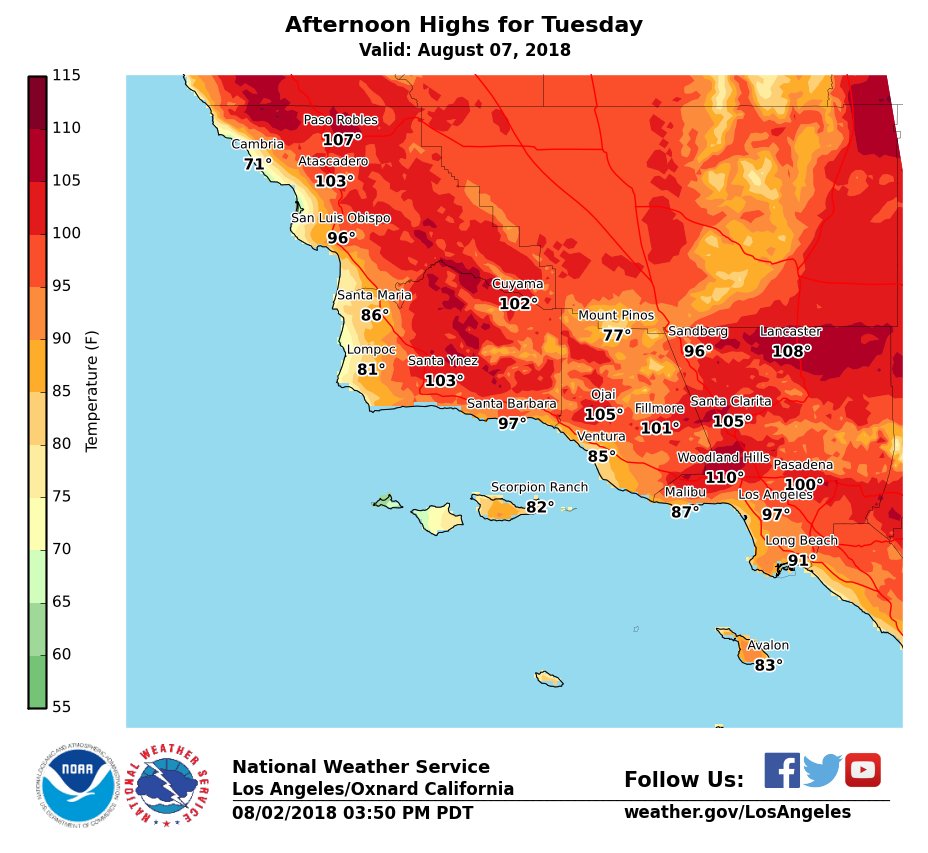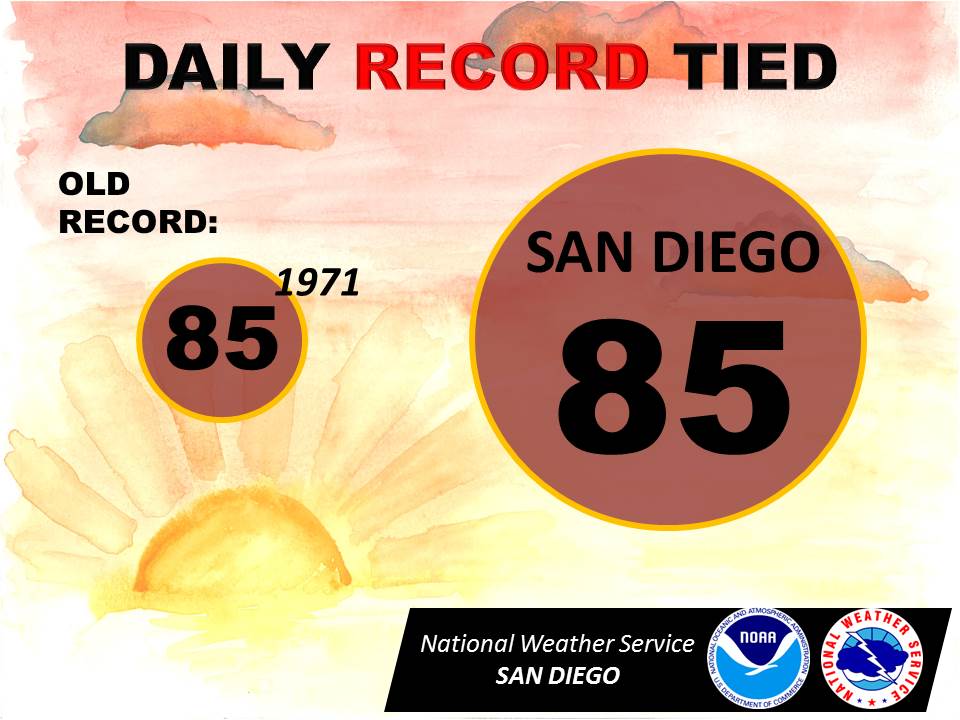Thursday August 2nd… Dear Diary. The main purpose of this ongoing post will be to track United States extreme or record temperatures related to climate change. Any reports I see of ETs will be listed below the main topic of the day. I’ll refer to extreme or record temperatures as ETs (not extraterrestrials)😊. Here is today’s main climate change post related hot topic:
An Uninhabitable Earth?
(As usual, this will be a fluid post in which more information gets added during the day as it crosses my radar, crediting all who have put it on-line.)
As I keep saying about this site: A) I won’t write about whether or not climate change is occurring because that debate is over (or it should be). And B) I’m highly interested in the new debate on how bad carbon pollution will eventually affect the planet. We have seen troubling heat waves across the Northern Hemisphere this summer, which have produced all-time records in several countries along with life ending, devastating wildfires. Now there is more than just speculation that wide swaths of the planet will become too hot for human habitation. One early sign, for example, is that the Iberian Peninsula will approach 50C (the forecast for this Friday).
The big question for this post is how warm global averages need to get before some locations become too hot for habitation, meaning too hot for even healthy people to be out of doors for short periods of time. After reading a considerable amount of articles and papers over the years I’m presenting my educated assessment that we can use as a rough guide. Here we are concentrating on heat alone, not coastal inundation from sea rise associated with the warmth.
To start the Paris Accords recommend that the planet gets no more than +2.0C above “preindustrial conditions,” which occurred before about the year 1880. There is a very good reason why +2.0C is a benchmark figure. We currently are at about +1.0C above preindustrial conditions as a baseline for this article. At +1.0C we see that horrendous heat events are occurring, but nowhere on the planet is really “uninhabitable,” at least not yet.
One more point here. I’m also going to take timetables out of this discussion. For simplicity let’s just write that these guidelines will represent the “maximum” average temperature above preindustrial conditions for Earth once the climate stabilizes whether or not mankind is able to get carbon pollution under control. This could optimistically be around the year 2100 or pessimistically much later during this millennium. If I get some insightful feedback saying that I need to make adjustments here, Ill do so. So, here we go:
+1.0C to +1.5C ……….Expect extreme heat waves with many all time maxes set in summer, but all areas of the planet are habitable.
+1.5C to +2.0C……….More extreme heat. A few locations around the Persian Gulf become uninhabitable in summer. Death Valley truly will spell death when temps there exceed 130F.
+2.0C to +3.0C………Major U.S. desert cities like Phoenix and Las Vegas may need to be abandoned in summer. Some locations around the Sahara are threatened including Cairo, Egypt. Locations extending from the Gobi Desert into China may not be livable. Most of Australia in and near todays desert locations will need to be abandoned. Air travel during summer becomes very difficult due to heat interacting with jets when temperatures exceed 120F.
+3.0C to +4.0C……..All of the U.S. Southwest may become unlivable including the coastal cities of Los Angeles and San Diego. Mid-latitude heat waves make life in cities such as Dallas extremely difficult. Large swaths of the Mediterranean become uninhabitable, partially due to drought. South Africa comes into play with some areas there becoming very difficult to inhabit. Most of Asia at lower elevations South of Russia become nearly unbearable during the summer. Closer to +4.0C nearly a third of the world can’t sustain habitation including nearly all of Australia, India and Pakistan.
+4.0C to +6.0C………At some point civilization as we know it collapses if it hasn’t already due to social stresses from averages between +2.0C and +4.0C due to drought and scarcity of drinking water. Only higher latitude areas close to the Arctic Circle may be habitable and farmable. Alaska and Northern Canada become prime real estate, but forests there maybe decimated by wildfire. Some might try to inhabit Antarctica as rapidly melting ice exposes land.
Above +6.0C………….Humans might be able to survive in deep caves or above and below water in domed cities, but the planet might only be a little more habitable than Mars, a world with an atmosphere too thin and cold for humans to survive without spacesuits. Imagine having to don a spacesuit just to be outside in present day New York…not a pleasant thought.
The following are some recent articles that led me to refine these rough assessments, which I will adjust with time as climate scientists learn more about regional effects of more warming across the globe. First, Professor Paul Beckwith explains why the human body can’t take certain high levels of heat and humidity. His video shows maps of areas most susceptible to becoming uninhabitable:

 The Real NewsVerified account @TheRealNews
The Real NewsVerified account @TheRealNews
New scientific research shows that humid heatwaves that kill even healthy people within hours will strike the area repeatedly towards the end of the century thanks to climate change, unless there are heavy cuts in carbon emissions.
“This spot is going to be the hottest spot for deadly heatwaves in the future,” said Prof Elfatih Eltahir, at the Massachusetts Institute of Technology, US, who led the new study. The projections for China’s northern plain are particularly worrying because many of the region’s 400 million people are farmers and have little alternative to working outside.
The research, published in the journal Nature Communications, found fatal WBTs of 35C would strike the north China plain repeatedly between 2070 and 2100, unless carbon emissions are cut. Shanghai, for example, would exceed the fatal threshold about five times and the “extreme danger” WBTs would occur hundreds of times. Even if significant carbon cuts are made, the “extreme danger” WBT would be exceeded many times.
Previous research by Eltahir and colleagues showed that the Gulf in the Middle East, the heartland of the global oil industry, will also suffer heatwaves beyond the limit of human survival if climate change is unchecked, particularly Abu Dhabi, Dubai, Doha and coastal cities in Iran. The fatal 35C WBT was almost reached in Bandar Mahshahr in Iran in July 2015, where 46C heat combined with 50% humidity.
China’s northern Plains will be the proverbial canary in the coal mine for the rest of the world this century. Will the world finally act in unison against climate change once China gets hit hard? We will see. After reading this are you scared enough to act? I hope so.

Tomorrow we will find out how hot Spain and Portugal get, reporting records.
…………………………………………………………………….
Friday the United States will see warmer maxes in the Plains, but well below record levels. The Southwest will continue to be the nation’s hot spot where the threat of devastating wildfires will continue. Heat will totally break in Washington and Oregon:

We will continue to deal with this next week:
 NWS Los AngelesVerified account @NWSLosAngeles
NWS Los AngelesVerified account @NWSLosAngeles


(If you like these posts and my work please contribute via the PayPal widget, which has recently been added to this site. Thanks in advance for any support.)
The Climate Guy


Good article. I’ll add a couple from my readings. Very quickly most of the forests on the west coast will burn down. This has already started. California will burn till the rains. I’ll say a total of a million acres and already about 250 acres have already burned.
The chances of a catastrophic flood in California that destroys most of the dams and causes a $trilliion is greater than 50% by 2050 (Daniel Swain PhD)
Boreal forests are already burning this will continue rapidly.
Enormous hurricanes like cat 6 will annhilated the Caribbean and the eastern seaboard. The coastal areas of America are primed for direct hits.
People will migrate to the coast or the mountains in Californianas the valley will become too hot in the summer. Humans will do solar and desalination a lot.